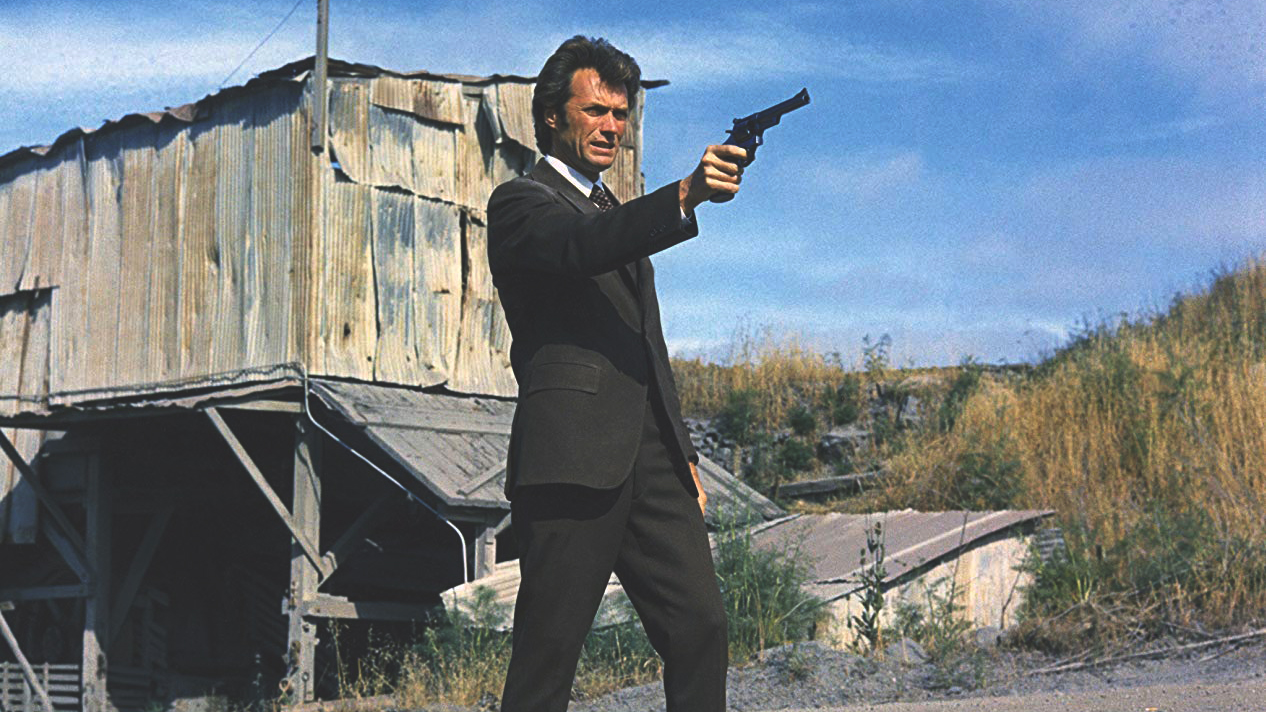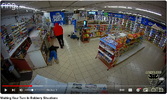westernrover
Member
- Joined
- May 4, 2018
- Messages
- 1,613
I recently started another thread where I contrasted what might be considered "most probable" defensive use of gun situations with what many regard as improbable fantasy scenarios. I didn't mean having to fight off six terrorists with plate carriers and fully-automatic rifles. Instead, I imagined having a cluster of misfortunes befall me all at once because I think that violence accompanies violence and it doesn't seem to be an absurd outlier that should I have to fight, I could be fighting with serious injuries, disabled limbs, having lost a firearm or having one become disabled, and being in disadvantageous positions, all at the same time.
I started EDC in 2018 with a j-frame. I had several for a couple years. Then I switched later in 2019 to a carrying a full-size L-frame with a red-dot optic. I've accumulated considerable training with it, and it's proven to be a gun that perfectly compliments my modest skill. I've demonstrated to myself that big, heavy revolvers with long barrels and precision sights are awesome. I love the way it can put double-action shots through the same ragged hole at 20 yards. I remember one time I was training my boy on the deer rifle, and we had a 3x5 index card at 100 yards. I said, "let me see if I can hit it with my revolver." I squeezed off a shot in double-action, and my son who was looking through the spotting scope said, "right in the middle." I can't say I always shoot like that, but if I don't, it's not the gun's fault. I like this gun enough I sold all my other handguns save for a couple single-actions that aren't for carry. I don't believe a few flattering anecdotes about my marksmanship perpare me for defensive use of lethal force, so I've also taken a few classes. I try to take at least one multi-day class every year. I travel around to the best schools I can find. I've taken classes in gun handling, shooting, tactics, and the legal issues. I haven't been at this that long, so I'm not under any delusion about the skills I possess, but I've certainly spent more on training than I have on handguns. In all that time, my revolver has proven to be more than a match for what others were training with.
I've decided that more of a good thing must be better and my next revolver should be an 8" Dan Wesson SuperMag in .357. I think I could figure out a way to carry it. One thing that bugs me is I don't think I could carry two. Ok, honestly, my L-frame is 45 ounces loaded and while I do carry it everyday, it is heavy and it demands a cover garment, at least an untucked shirt. I think it would be awesome to deal 357 Maximums from a 4 1/2-pound gun. You see, this is how I imagine myself in a defensive use of lethal-force:

No, it's not wielding the most powerful handgun in the world that can blow your head clean-off. The reason I carry a 45-ounce gun now and the reason I'd like to carry a 72-ounce gun in 357 and not 44 or 445 is not for the super power, but for the size and weight. The thing about Harry here is not his gun, but his position and stance. It's how I might imagine myself fighting off an attacker. It looks like my training. Ok, there was that one time in a phone booth, and prone inside a 55-gallon drum. I've trained movement and "run and gun" type tactics too, and around vehicles, but that stuff tends to come with guys that dress like spec-ops do tactical operator stuff -- provide your own picture here.
In my other thread, one respondent replied:
How about this one:

This is a screen-grab from a video that has enough information to look it up. The robbers leave without shooting anyone, but here is what I imagine could have happened instead: What if I was the guy in the black shirt on the ground. I had been ambushed by the two gun-men (the second one is assaulting a victim that is blurred-out behind the counter) and didn't have a "turn" to draw. Now imagine that the attacker in red has shot me in the groin and the other man on the ground also. I'm bleeding and lying in a pool of urine from a perforated bladder. I can still survive, but I have to draw my weapon and stop the man in red while he has his back turned on me, and then I have to fight the attacker in blue on the other side of the counter and stop him before he kills me. Otherwise they will rob the cash register and shoot me again on their way out.
I know there's hotdogs right there, but I don't get to munch on one while I blow these guys away. I've got to try to draw from the waist when my gun is wet with blood and urine. If I hit the red guy with three shots, I would have had only three left for the blue guy. When my shots hit them, there's no springboard that's going to launch them into the beer cooler. I won't have time to reload before engaging both. You thought this was another revolver vs automatic thread but you're wrong. Right before this happened, I swore off my Fudd ways and packed a Glock 17. The thing is, the shot I took through my lower back, was stopped by the Glock's slide on the other side. It's dented and won't function.
I started EDC in 2018 with a j-frame. I had several for a couple years. Then I switched later in 2019 to a carrying a full-size L-frame with a red-dot optic. I've accumulated considerable training with it, and it's proven to be a gun that perfectly compliments my modest skill. I've demonstrated to myself that big, heavy revolvers with long barrels and precision sights are awesome. I love the way it can put double-action shots through the same ragged hole at 20 yards. I remember one time I was training my boy on the deer rifle, and we had a 3x5 index card at 100 yards. I said, "let me see if I can hit it with my revolver." I squeezed off a shot in double-action, and my son who was looking through the spotting scope said, "right in the middle." I can't say I always shoot like that, but if I don't, it's not the gun's fault. I like this gun enough I sold all my other handguns save for a couple single-actions that aren't for carry. I don't believe a few flattering anecdotes about my marksmanship perpare me for defensive use of lethal force, so I've also taken a few classes. I try to take at least one multi-day class every year. I travel around to the best schools I can find. I've taken classes in gun handling, shooting, tactics, and the legal issues. I haven't been at this that long, so I'm not under any delusion about the skills I possess, but I've certainly spent more on training than I have on handguns. In all that time, my revolver has proven to be more than a match for what others were training with.
I've decided that more of a good thing must be better and my next revolver should be an 8" Dan Wesson SuperMag in .357. I think I could figure out a way to carry it. One thing that bugs me is I don't think I could carry two. Ok, honestly, my L-frame is 45 ounces loaded and while I do carry it everyday, it is heavy and it demands a cover garment, at least an untucked shirt. I think it would be awesome to deal 357 Maximums from a 4 1/2-pound gun. You see, this is how I imagine myself in a defensive use of lethal-force:

No, it's not wielding the most powerful handgun in the world that can blow your head clean-off. The reason I carry a 45-ounce gun now and the reason I'd like to carry a 72-ounce gun in 357 and not 44 or 445 is not for the super power, but for the size and weight. The thing about Harry here is not his gun, but his position and stance. It's how I might imagine myself fighting off an attacker. It looks like my training. Ok, there was that one time in a phone booth, and prone inside a 55-gallon drum. I've trained movement and "run and gun" type tactics too, and around vehicles, but that stuff tends to come with guys that dress like spec-ops do tactical operator stuff -- provide your own picture here.
In my other thread, one respondent replied:
Once you've already decided that you are going to prepare, now you're only deciding what you want to prepare for.
How about this one:

This is a screen-grab from a video that has enough information to look it up. The robbers leave without shooting anyone, but here is what I imagine could have happened instead: What if I was the guy in the black shirt on the ground. I had been ambushed by the two gun-men (the second one is assaulting a victim that is blurred-out behind the counter) and didn't have a "turn" to draw. Now imagine that the attacker in red has shot me in the groin and the other man on the ground also. I'm bleeding and lying in a pool of urine from a perforated bladder. I can still survive, but I have to draw my weapon and stop the man in red while he has his back turned on me, and then I have to fight the attacker in blue on the other side of the counter and stop him before he kills me. Otherwise they will rob the cash register and shoot me again on their way out.
I know there's hotdogs right there, but I don't get to munch on one while I blow these guys away. I've got to try to draw from the waist when my gun is wet with blood and urine. If I hit the red guy with three shots, I would have had only three left for the blue guy. When my shots hit them, there's no springboard that's going to launch them into the beer cooler. I won't have time to reload before engaging both. You thought this was another revolver vs automatic thread but you're wrong. Right before this happened, I swore off my Fudd ways and packed a Glock 17. The thing is, the shot I took through my lower back, was stopped by the Glock's slide on the other side. It's dented and won't function.

